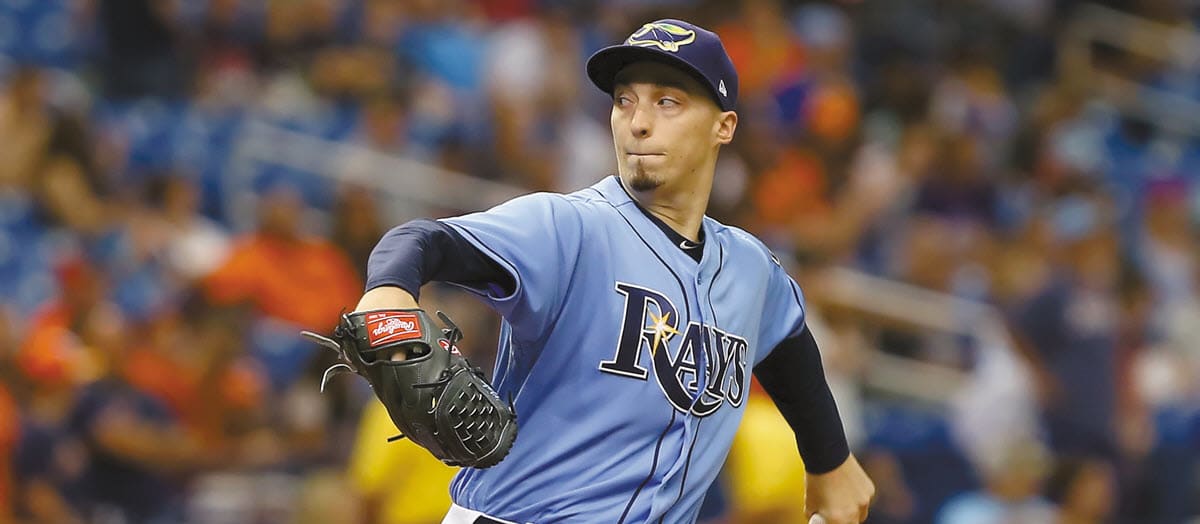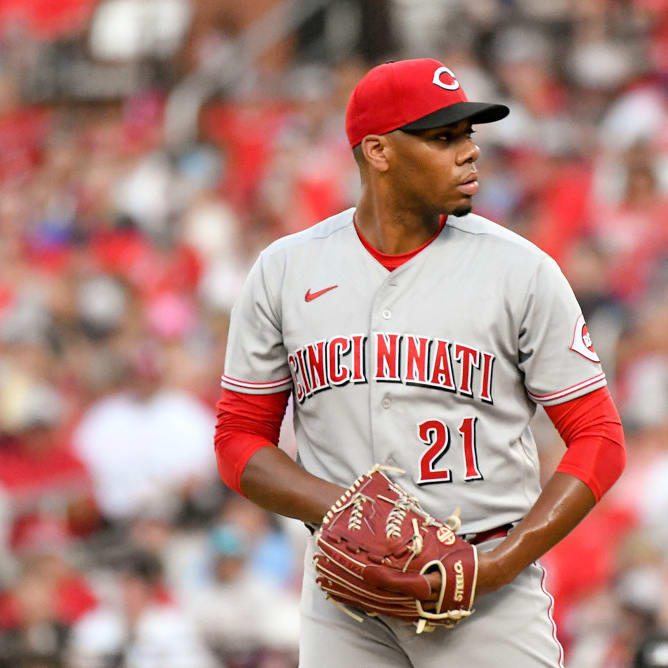This article is part of our MLB Barometer series.
The season is no longer young, yet the leaderboards are still filled with some surprising names. Look at the wRC+ leaderboard, for example, and you'll find the following players in the top 20: Josh Bell (3rd), Willson Contreras (6th), Daniel Vogelbach (7th), Jorge Polanco (8th), Paul DeJong (11th), Tommy La Stella (12th) and Hunter Dozier (15th). What do we do with these apparent breakouts? How do we value them as potential sell-highs or possibly even buy-highs?
Let's look at a list of similarly surprising names from last season. We'll compare a set of early season standouts through May 20 last season next to their wRC+ the rest of the way. I've added each player's BABIP for both stretches to help gauge the flukiness of their performances. BABIP does tend to oversimplify things, and there's always more to the picture, but if I were ever given a 30-second ultimatum to accept or reject a trade offer, it's the first stat I'd look at after checking out the player's surface-level statistics.
| Player | wRC+ through May 20 | BABIP through May 20 | wRC+ after May 20 | BABIP after May 20 |
|---|---|---|---|---|
| Brandon Belt | 171 | .379 | 61 | .271 |
| Mitch Moreland | 163 | .347 |
The season is no longer young, yet the leaderboards are still filled with some surprising names. Look at the wRC+ leaderboard, for example, and you'll find the following players in the top 20: Josh Bell (3rd), Willson Contreras (6th), Daniel Vogelbach (7th), Jorge Polanco (8th), Paul DeJong (11th), Tommy La Stella (12th) and Hunter Dozier (15th). What do we do with these apparent breakouts? How do we value them as potential sell-highs or possibly even buy-highs?
Let's look at a list of similarly surprising names from last season. We'll compare a set of early season standouts through May 20 last season next to their wRC+ the rest of the way. I've added each player's BABIP for both stretches to help gauge the flukiness of their performances. BABIP does tend to oversimplify things, and there's always more to the picture, but if I were ever given a 30-second ultimatum to accept or reject a trade offer, it's the first stat I'd look at after checking out the player's surface-level statistics.
| Player | wRC+ through May 20 | BABIP through May 20 | wRC+ after May 20 | BABIP after May 20 |
|---|---|---|---|---|
| Brandon Belt | 171 | .379 | 61 | .271 |
| Mitch Moreland | 163 | .347 | 80 | .268 |
| Jesus Aguilar | 163 | .370 | 126 | .291 |
| Odubel Herrera | 159 | .387 | 69 | .247 |
| Jed Lowrie | 157 | .366 | 107 | .277 |
| Daniel Robertson | 154 | .338 | 108 | .323 |
| Guillermo Heredia | 152 | .313 | 70 | .259 |
What does this quick investigation tell us? Mostly that if you didn't have a reason to believe a player was particularly good prior to the season, he's probably still not particularly good. In none of these cases did the early hot streak sustain anywhere near the same level the rest of the way, with large (and generally unsurprising) drops in BABIP sending each player's wRC+ crashing along with it.
That's not to say that all early season breakouts are bound to completely disappoint. This quick analysis simply shows that fantasy owners should be wary of paying anywhere near full price for a surprising player's performance. It's still possible to be happy with the results from a player like this even after buying high, as long as you don't buy too high, with Jesus Aguilar a prime example from last season. Assuming the selling team didn't expect a top-tier return for him, owners who acquired Aguilar in mid-May were likely happy enough with what they got the rest of the way.
Still, examples like Belt, Moreland, Herrera and Heredia are worth keeping in mind when making a move for similar surprises like La Stella and Dozier this season, even if those players do have some supporting stats that back up their performances so far. This column will continue to highlight surprising performances and demonstrate ways players have backed those performances, but it's one thing for a player to have deserved his numbers to date and quite another for him to transform his profile completely.
RISERS
 Blake Snell, SP, Rays: Snell dominated his last three starts, recording a 1.53 ERA, a 0.79 WHIP and a 30:3 K:BB. He looks to be back in form after a rocky April that saw him head to the injured list with a broken toe and return for consecutive short, unimpressive outings. His 3.31 ERA this season is no match for the incredible 1.89 mark he recorded last year, but some of his supporting metrics suggest he's pitching even better than before. He's improved his strikeout rate from an excellent 31.6 percent to an incredible 37.8 percent, second in the league among qualified starters, and has paired that with a drop in walk rate from 9.1 percent to 6.4 percent. He's also trimmed batters' hard-hit rate from 35.7 to 26.9 percent. Add it all up, and this looks like a pitcher who is taking another step following his Cy Young season, even if last year's ERA and win total are ultimately unsustainable.
Blake Snell, SP, Rays: Snell dominated his last three starts, recording a 1.53 ERA, a 0.79 WHIP and a 30:3 K:BB. He looks to be back in form after a rocky April that saw him head to the injured list with a broken toe and return for consecutive short, unimpressive outings. His 3.31 ERA this season is no match for the incredible 1.89 mark he recorded last year, but some of his supporting metrics suggest he's pitching even better than before. He's improved his strikeout rate from an excellent 31.6 percent to an incredible 37.8 percent, second in the league among qualified starters, and has paired that with a drop in walk rate from 9.1 percent to 6.4 percent. He's also trimmed batters' hard-hit rate from 35.7 to 26.9 percent. Add it all up, and this looks like a pitcher who is taking another step following his Cy Young season, even if last year's ERA and win total are ultimately unsustainable.
 Josh Bell, 1B, Pirates: No NL regular has a better wRC+ the last two weeks than Bell and his 260 mark, earned on the back of batting .440/.500/.880. The 26-year-old was a decent enough all-around hitter in his first three seasons in the majors, with above-average batting lines in all three seasons, but his power wasn't up to first-base standards, as he managed just 12 homers last season. He's already beat that mark this season, with his 14 homers tying for fourth in the league, while his .697 slugging percentage ranks third. Despite Bell's .366 BABIP, Statcast suggests there hasn't been a ton of luck in getting him to his excellent .333/.404/.697 batting line, as his expected batting average is .325 while his expected slugging percentage is .685. This seems to be simply a case of a player who had a moderate amount of hype as a prospect a few years back suddenly figuring out how to make far better contact. Bell's hard-hit rate has soared from 39.0 to 57.7 percent, while his barrel rate has more than doubled from 7.0 to 18.7 percent.
Josh Bell, 1B, Pirates: No NL regular has a better wRC+ the last two weeks than Bell and his 260 mark, earned on the back of batting .440/.500/.880. The 26-year-old was a decent enough all-around hitter in his first three seasons in the majors, with above-average batting lines in all three seasons, but his power wasn't up to first-base standards, as he managed just 12 homers last season. He's already beat that mark this season, with his 14 homers tying for fourth in the league, while his .697 slugging percentage ranks third. Despite Bell's .366 BABIP, Statcast suggests there hasn't been a ton of luck in getting him to his excellent .333/.404/.697 batting line, as his expected batting average is .325 while his expected slugging percentage is .685. This seems to be simply a case of a player who had a moderate amount of hype as a prospect a few years back suddenly figuring out how to make far better contact. Bell's hard-hit rate has soared from 39.0 to 57.7 percent, while his barrel rate has more than doubled from 7.0 to 18.7 percent.
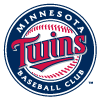 Jorge Polanco, SS, Twins: After a surprisingly hot start to the season, Polanco has gotten even hotter, posting a .429/.475/.679 line the last 13 games to raise his season line an impressive .343/.405/.606. His .371 BABIP has undoubtedly inflated those numbers somewhat, but his quality of contact has still been quite strong. His power numbers are backed up by a hard-hit rate that has taken a major jump from 27.9 to 39.9 percent and a launch angle which has risen from 15.5 to 21.9 degrees. Not only is he hitting the ball better, he's hitting it more often, trimming his strikeout rate from 18.6 to 14.4 percent. The high BABIP can't be ignored, as Statcast gives his expected batting average as a comparatively unimpressive .284, but Polanco could fall a long way and still be a significant return on investment given his low draft-day price.
Jorge Polanco, SS, Twins: After a surprisingly hot start to the season, Polanco has gotten even hotter, posting a .429/.475/.679 line the last 13 games to raise his season line an impressive .343/.405/.606. His .371 BABIP has undoubtedly inflated those numbers somewhat, but his quality of contact has still been quite strong. His power numbers are backed up by a hard-hit rate that has taken a major jump from 27.9 to 39.9 percent and a launch angle which has risen from 15.5 to 21.9 degrees. Not only is he hitting the ball better, he's hitting it more often, trimming his strikeout rate from 18.6 to 14.4 percent. The high BABIP can't be ignored, as Statcast gives his expected batting average as a comparatively unimpressive .284, but Polanco could fall a long way and still be a significant return on investment given his low draft-day price.
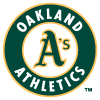 Frankie Montas, SP, Athletics: Montas was basically free in draft season, coming in as the 225th pitcher off the board in the NFBC, sandwiched between Craig Stammen and Jerad Eickhoff. His career 4.90 ERA and 19.8 percent strikeout rate in 112 innings prior to this season made that not an unreasonable price, but suddenly this year he's been the 21st most valuable pitcher through his first nine starts according to our earned auction values. His statistical profile was always an odd one, as he had been unable to record a high strikeout rate despite a fastball that averaged about 97 mph. This year, he's finally producing results in line with his weapons, striking out 23.4 percent of batters, walking just 5.0 percent and generating a 53.5 percent groundball rate, a number in line with what one might expect from a pitcher who relies primarily on a sinker. The result is a pitcher whose 2.91 FIP largely supports his 2.67 ERA, and even the most pessimistic of the publicly available ERA estimators, SIERA, gives him a 3.53 mark. With a pitcher-friendly park behind him and the ability to keep the ball on the ground in a homer-crazy era, Montas is a good bet to remain a quality arm.
Frankie Montas, SP, Athletics: Montas was basically free in draft season, coming in as the 225th pitcher off the board in the NFBC, sandwiched between Craig Stammen and Jerad Eickhoff. His career 4.90 ERA and 19.8 percent strikeout rate in 112 innings prior to this season made that not an unreasonable price, but suddenly this year he's been the 21st most valuable pitcher through his first nine starts according to our earned auction values. His statistical profile was always an odd one, as he had been unable to record a high strikeout rate despite a fastball that averaged about 97 mph. This year, he's finally producing results in line with his weapons, striking out 23.4 percent of batters, walking just 5.0 percent and generating a 53.5 percent groundball rate, a number in line with what one might expect from a pitcher who relies primarily on a sinker. The result is a pitcher whose 2.91 FIP largely supports his 2.67 ERA, and even the most pessimistic of the publicly available ERA estimators, SIERA, gives him a 3.53 mark. With a pitcher-friendly park behind him and the ability to keep the ball on the ground in a homer-crazy era, Montas is a good bet to remain a quality arm.
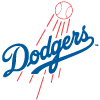 Rich Hill, SP, Dodgers: Hill is back and as good as ever. In four starts since returning from a knee injury, he's managed a 3.00 ERA, highlighted by a 10-strikeout gem in six shutout innings Friday in Cincinnati. His 27.9 percent strikeout rate is right in line with his 27.4 percent mark from last season, but he's trimmed his walk rate from 7.5 to just 3.5 percent. The 39-year-old has added a tick to his fastball and has increased his curveball usage from 35.7 to 42.0 percent, in line with his pitch usage from his incredible 2016 campaign, when he finished with a 2.12 ERA. Hill's fantasy owners know by now to expect another trip or two to the injured list and to expect his outings to remain relatively short, but there doesn't appear to be any loss of skills despite his age.
Rich Hill, SP, Dodgers: Hill is back and as good as ever. In four starts since returning from a knee injury, he's managed a 3.00 ERA, highlighted by a 10-strikeout gem in six shutout innings Friday in Cincinnati. His 27.9 percent strikeout rate is right in line with his 27.4 percent mark from last season, but he's trimmed his walk rate from 7.5 to just 3.5 percent. The 39-year-old has added a tick to his fastball and has increased his curveball usage from 35.7 to 42.0 percent, in line with his pitch usage from his incredible 2016 campaign, when he finished with a 2.12 ERA. Hill's fantasy owners know by now to expect another trip or two to the injured list and to expect his outings to remain relatively short, but there doesn't appear to be any loss of skills despite his age.
 Austin Meadows, OF, Rays: Meadows returned from his thumb sprain and continued to rake, going 8-for-27 at the plate with three homers in eight games. His season batting line is now a remarkable .337/.422/.673, a big step up from the solid but unspectacular .287/.325/.461 mark he recorded in his 59-game debut last season. His Statcast numbers suggest that the power is somewhat unsustainable but don't dispute the fact that he's making excellent contact, giving him a .320 expected batting average and a .577 expected slugging percentage. He's raised his exit velocity by a few ticks (from 88.2 to 91.6 mph) and seen a big jump in his launch angle (from 13.7 degrees to 17.9 degrees), causing his barrel rate to more than double from 6.4 percent to 14.5 percent. Meadows was long considered a top prospect with the ability to hit for both power and average, with nine steals in 87 career games thrown in on top of that, and his move to the Rays appears to have put the finishing touches on his profile after he'd seemingly stalled out in the high minors in Pittsburgh.
Austin Meadows, OF, Rays: Meadows returned from his thumb sprain and continued to rake, going 8-for-27 at the plate with three homers in eight games. His season batting line is now a remarkable .337/.422/.673, a big step up from the solid but unspectacular .287/.325/.461 mark he recorded in his 59-game debut last season. His Statcast numbers suggest that the power is somewhat unsustainable but don't dispute the fact that he's making excellent contact, giving him a .320 expected batting average and a .577 expected slugging percentage. He's raised his exit velocity by a few ticks (from 88.2 to 91.6 mph) and seen a big jump in his launch angle (from 13.7 degrees to 17.9 degrees), causing his barrel rate to more than double from 6.4 percent to 14.5 percent. Meadows was long considered a top prospect with the ability to hit for both power and average, with nine steals in 87 career games thrown in on top of that, and his move to the Rays appears to have put the finishing touches on his profile after he'd seemingly stalled out in the high minors in Pittsburgh.
FALLERS
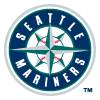 Tim Beckham, SS/3B, Mariners: Beckham came out of the gates extremely hot, batting .419/.490/.837 with four homers through his first 11 games. Since then, he's fallen off hard, recording a .196/.244/.366 line in 32 games, striking out 32.8 percent of the time over that stretch. That performance has seen him fall out of favor recently, and he's started just three times in the last eight games. J.P. Crawford, a 24-year-old former top prospect and prize of the Jean Segura trade, is now up and serving as the regular shortstop. Crawford may not have much higher expectations than Beckham the rest of this season, but the Mariners have far more incentive to see what Crawford can do rather than run the 29-year-old Beckham back out there. It would be a surprise to see Beckham reclaim a starting role unless Crawford gets injured.
Tim Beckham, SS/3B, Mariners: Beckham came out of the gates extremely hot, batting .419/.490/.837 with four homers through his first 11 games. Since then, he's fallen off hard, recording a .196/.244/.366 line in 32 games, striking out 32.8 percent of the time over that stretch. That performance has seen him fall out of favor recently, and he's started just three times in the last eight games. J.P. Crawford, a 24-year-old former top prospect and prize of the Jean Segura trade, is now up and serving as the regular shortstop. Crawford may not have much higher expectations than Beckham the rest of this season, but the Mariners have far more incentive to see what Crawford can do rather than run the 29-year-old Beckham back out there. It would be a surprise to see Beckham reclaim a starting role unless Crawford gets injured.
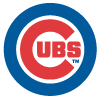 Jason Heyward, OF, Cubs: Heyward looked to be undergoing a renaissance, hitting an excellent .329/.428/.529 over his first 26 games. That performance earned him a mention as a riser in this column a few weeks ago and had fantasy owners wondering if he was getting back some of his previous promise. Since then, he's hit a miserable .111/.176/.222 over his last 16 games, sending his season line crashing to an all-too-familiar .236/.335/.399. There's been some poor BABIP luck over that stretch, but he's also seen his hard-hit rate fall from 30.4 percent in the first month of the season to 23.5 percent since May 1. Heyward was legitimately hitting the ball better than expected early in the season, but that looks at this point to be nothing more than a hot streak, and his three straight seasons of disappointing numbers should outweigh one brief period of improved performance.
Jason Heyward, OF, Cubs: Heyward looked to be undergoing a renaissance, hitting an excellent .329/.428/.529 over his first 26 games. That performance earned him a mention as a riser in this column a few weeks ago and had fantasy owners wondering if he was getting back some of his previous promise. Since then, he's hit a miserable .111/.176/.222 over his last 16 games, sending his season line crashing to an all-too-familiar .236/.335/.399. There's been some poor BABIP luck over that stretch, but he's also seen his hard-hit rate fall from 30.4 percent in the first month of the season to 23.5 percent since May 1. Heyward was legitimately hitting the ball better than expected early in the season, but that looks at this point to be nothing more than a hot streak, and his three straight seasons of disappointing numbers should outweigh one brief period of improved performance.
 CC Sabathia, SP, Yankees: Sabathia makes this list despite a strong 2.97 ERA thanks to some very poor peripherals. Batters have managed just a .198 BABIP despite a hard-hit rate that has jumped from 28.5 percent last season to 46.4 percent this year. The veteran lefty's strikeout rate has fallen more than three points to 17.8 percent, while his walk rate has jumped more than two points to 9.9 percent. His 37.0 percent groundball rate is the lowest of his career and comes is least seven points lower than in any of the previous nine seasons. Sabathia has continually escaped jams, recording a 95.5 percent strand rate, but his 6.08 FIP indicates just how ugly things could get if that number regresses. The 38-year-old has beaten his FIP in each of the previous seasons, but no one can reliably outpitch his peripherals by that great a margin.
CC Sabathia, SP, Yankees: Sabathia makes this list despite a strong 2.97 ERA thanks to some very poor peripherals. Batters have managed just a .198 BABIP despite a hard-hit rate that has jumped from 28.5 percent last season to 46.4 percent this year. The veteran lefty's strikeout rate has fallen more than three points to 17.8 percent, while his walk rate has jumped more than two points to 9.9 percent. His 37.0 percent groundball rate is the lowest of his career and comes is least seven points lower than in any of the previous nine seasons. Sabathia has continually escaped jams, recording a 95.5 percent strand rate, but his 6.08 FIP indicates just how ugly things could get if that number regresses. The 38-year-old has beaten his FIP in each of the previous seasons, but no one can reliably outpitch his peripherals by that great a margin.
 Mike Foltynewicz, SP, Braves: Foltynewicz finally pitched a quality start Sunday against the Brewers, but he still struck out just three batters, and his overall season stats remain quite poor. His ERA through five starts is an ugly 6.91, and it's not clear that all that much of that figure has been bad luck. His 27.2 percent strikeout rate from last season (well above his career-high 21.1 percent) looks to be a clear outlier, as that number has collapsed to 14.1 percent this season. His homer problem is bad enough that his two home runs allowed in six innings on Sunday actually lowered his HR/9, which is now 3.29. That number can be partially attributed to poor HR/FB luck, but he's also seen his groundball rate fall to 37.4 percent. The 27-year-old had a thoroughly mediocre 4.87 ERA through the end of the 2017 season, and it's beginning to look like that number is more reflective of who he'll be than the excellent 2.85 ERA he posted last season.
Mike Foltynewicz, SP, Braves: Foltynewicz finally pitched a quality start Sunday against the Brewers, but he still struck out just three batters, and his overall season stats remain quite poor. His ERA through five starts is an ugly 6.91, and it's not clear that all that much of that figure has been bad luck. His 27.2 percent strikeout rate from last season (well above his career-high 21.1 percent) looks to be a clear outlier, as that number has collapsed to 14.1 percent this season. His homer problem is bad enough that his two home runs allowed in six innings on Sunday actually lowered his HR/9, which is now 3.29. That number can be partially attributed to poor HR/FB luck, but he's also seen his groundball rate fall to 37.4 percent. The 27-year-old had a thoroughly mediocre 4.87 ERA through the end of the 2017 season, and it's beginning to look like that number is more reflective of who he'll be than the excellent 2.85 ERA he posted last season.

